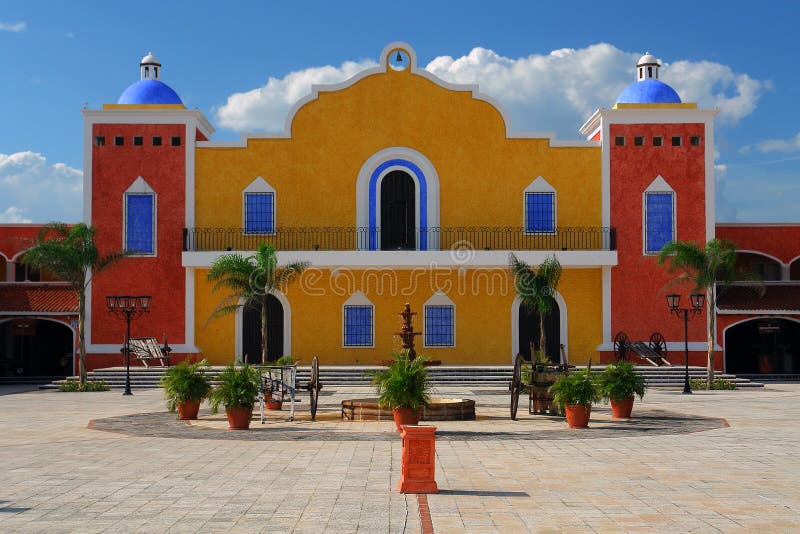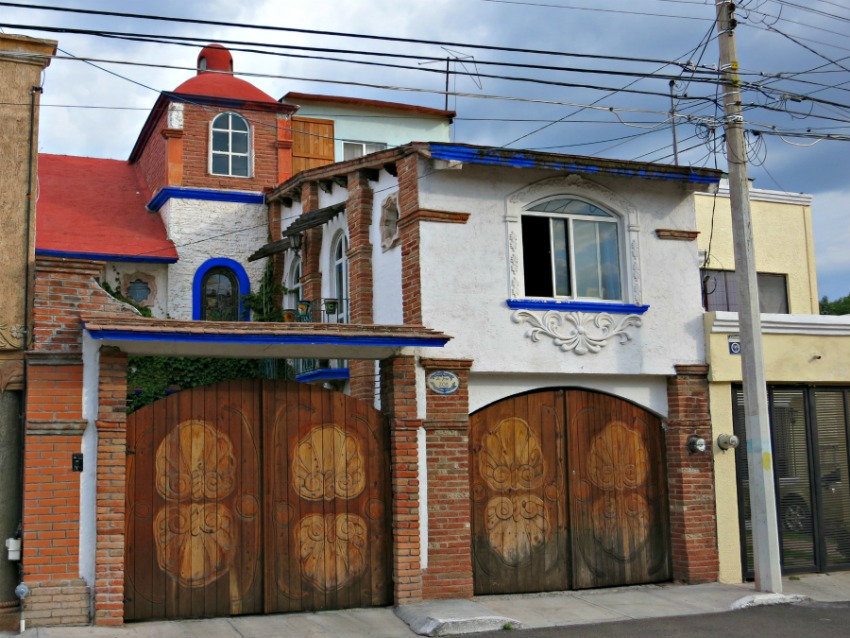Table Of Content

The large front door of this home almost looks like the grand entrance to an ancient cathedral. You could easily imagine the church bells chiming as you step through. The door itself is made from an intensely dark wood that juts out from the muted white color of the surrounding walls. Many Mexican homes can also be spotted thanks to unique paintings and murals towards the front. This home, situated on a sloped street features a tremendous blue and red color scheme, with images of stars dotted throughout.

Q: How are Traditional Mexican-style Houses different than other Mexican homes?
Daily updates on the latest design and architecture vacancies advertised on Dezeen Jobs. RED Arquitectos created this screen-wrapped house on a small island off the Yucatán Peninsula almost entirely out of wood from coconut palm trees. The interior living spaces are arranged beneath a long structural vault, which the architects said was intended to recall the childhood sensation of snuggling beneath a blanket. Architecture firm Lopez Gonzalez Studio designed this black house with asymmetrical red-framed windows to stand out from its suburban surroundings. This house, facing the Pacific Ocean in a beach village not far from the city of Zihuatanejo, is centred around a traditional palapa with a dried palm-thatched roof.
Mexican Style Homes: Exploring the Essence of Hacienda Architecture

Adobe was a readily available, sturdy, and long-lasting building option. The thick, white walls were ideal for retaining cool air during hot and sunny days. The walls also slowly release the sun’s warmth into a home at night when it’s cooler. When it comes to capturing the essence of Mexican style homes, hacienda architecture stands out with its distinctive charm.
Tips on Finding Your Mexico Home
These houses, known as Spanish colonial houses, bear resemblance to Dutch colonial homes. The Spanish colonial period refers to the time when Spain colonized Mexico. These distinctive houses share similarities with hacienda style homes, but the main distinction lies in the greater European influences seen in Spanish colonial houses compared to Mexican homes. Overall, tile roofs are an integral part of Mexican style house plans, combining aesthetic charm, durability, and practical benefits to create a unique and inviting living space. The term “hacienda” refers to ranch-style homes that can be found throughout Mexico as well in some of the southern regions of the U.S. Typically, these houses only have one story and they are spread out over a large property.
Key Milan design week installations
There’s also a sprawling outdoor area with a lawn and swimming pool surrounded by handmade picnic benches and tables. The downtown urban areas of Mexico’s largest cities such as Guadalajara or Mexico City are characterized by modern houses. The style of these houses is a familiar one in regions such as Taos and Santa Fe as well.
Square doorways can be found often too but not because they’re part of the culture. In terms of planning, the user oriented spatial zones are actually separate from each other, with family rooms privately detached from utility spaces such as kitchens. During our previous tryst with Mexican architecture, we talked about the different types of vibrant Mexican style interiors you could adopt for your decor. And now from interiors, we move on to the exterior side of affairs, the Mexican style house. Well, Mexico as a nation has always exhibited the extremes of avenues. These cultural and societal ‘crests and troughs’ are somewhat alluded to by the eclectic mix of Mexican architecture found in residences.
Important Things to Keep in Mind When Adding a Conservatory to Your House
Hacienda architecture is original to Spain and Mexico, where it's considered a traditional architectural style with traditional building techniques. Dating back nearly four hundred years, hacienda-style homes have a long history in the United States, too. Another intriguing feature commonly found in Mexican style homes is the turquoise front door. New Mexico, in particular, is known for its vibrant turquoise-colored doors. These doors serve as a symbol of good luck and protection, as turquoise is believed to have spiritual significance in Mexican culture.
Traditional Mexican homes styles range from colonial homes and old country haciendas to tiny casitas rustic and adobe ranches. The architecture of houses Mexico was profoundly influenced by Moorish and Mediterranean styles that were brought here by the Spanish colonists. Mexico was the richest region of the Spanish colonial empire and for this reason numerous houses in Mexico are built in colonial style.
Curves And Beams
Now you can clearly see the indelible impact that Mexican style has had on modern and contemporary architecture. Clearly, there is something timeless about Mexican architectural standards, and that is how it has been able to have such strong staying power. The balcony on this home looks like a wonderful spot to observe your neighborhood like a king from medieval times looking over his kingdom.
The architecture of these modern houses is inspired by Mexican Native American cultures and some of the distinctive features include several levels of patios and flat roofs. Many of these houses are built from stucco or adobe and they feature wooden ceilings and tile floors. Because of their small windows that allow the interiors to remain cool, these houses are very popular in the hot regions of Mexico. Some common resources included adobe, made from straw and clay (finished with white stucco), and red clay for the iconic hacienda roof tiles.
East Oak Lane Spanish Colonial Revival House for Sale - Philadelphia magazine
East Oak Lane Spanish Colonial Revival House for Sale.
Posted: Fri, 30 Jun 2023 07:00:00 GMT [source]
Her bedroom and her physician father’s library are well-preserved. To learn traditional building techniques, practice bricklaying regularly. Try workshops or classes related to traditional construction methods to gain expertise. Introducing the Compressed Soil Technique, also known as Rammed Earth Technique. This non-tag-based construction method has been in practice since ancient times.
They give the home a rustic look and the walls are tough enough to handle rough weather. Texan hacienda-style homes are specific to the state of Texas. These homes feature many of the same style elements as other hacienda-style homes, with a few key differences. While there are some small Mexican hacienda-style homes, most traditional Mexican haciendas are large-scale estates.
Over the course of nearly four centuries, this architectural style found its way to the United States between the 1600s and the mid-1800s. Spanish settlers, seeking climates reminiscent of their homelands, built their hacienda homesteads in states such as California, Arizona, New Mexico, and Florida. Mexican-style homes often feature curved or arched doorways and windows, as well as square doorways. These architectural choices are not necessarily rooted in Mexican culture.
The Vecindad style reflects the rich cultural heritage and close-knit social fabric of Mexican neighborhoods. Despite the end of the Spanish Colonial period, the popularity of hacienda-style homes endured. In the 1900s, the Colonial Revival movement further popularized these homes, leading to the use of traditional materials such as adobe and clay. Heavy wooden doors and exposed wooden beams are commonly used elements in hacienda-style homes. Because stucco walls aren't often finished with wooden trim, exposed beams are used as wall and ceiling supports.

No comments:
Post a Comment